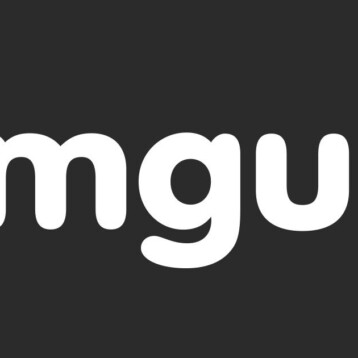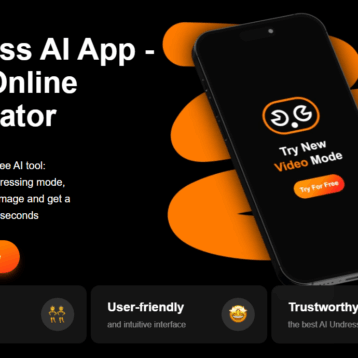Managing the web of communications among parents, students, teachers, and administrators poses a significant challenge for educational institutions. Plus, the burdens of admin tasks, from bill payments to student tracking, can be overwhelming, especially for medium to large educational institutions.
The adoption of school management systems emerges as a transformative solution, automating processes and reducing the administrative load. In this article, let’s explore the concept of school management systems, and the benefits it offers.
What Is a School Management System?
A school management system is an information management tool used by educational institutions to navigate the complexities of day-to-day activities. Its primary purpose is to alleviate the burden on teachers and speed up the retrieval of student information.
Student databases within these systems contain several information including test results, parent contact details, costs, and other details. The functionalities extend to include student registration, documents, analytical assessments, planning, attendance tracking, and student needs management.
Essential Features of School Management Software
Most School Management Software packages are structured around four foundational pillars. These pillars offer a basic set of functionalities that are intended to support the day-to-day operations of almost any educational institution, regardless of the range of features that are offered. The pillars are:
Program and Class Scheduling Management
This feature is quite extensive and includes a number of tools for curriculum management, class and course grouping, and specific attribute specification. This feature, which covers class scheduling for both in-person and online classroom sessions forms the basis of school information software.
Admissions and Data Administration
Important features of school management software include student registration, class group assignment, and course and class enrollment. Eventually, the information gathered from these procedures forms the foundation for evaluating each student’s development throughout their academic journey.
School administration goes outside the classroom in addition to the daily alerts pertaining to classes.
Access to important data, such as timetables, attendance records, gradebooks, fees, pending and outstanding amounts, and installment plans, is frequently necessary for parents, guardians, and students. This feature includes all the particular features required to provide this data.
Academics Management
Managing teachers and staff can frequently be just as difficult as organizing and overseeing students. This feature aids in the effective management of daily operations involving instructors, administrative teams, and support personnel. Includes features such as financials, assessments, grading, attendance tracking, and teacher-specific payment processing.
Role Management
Role management is an essential feature of school administration software that ensures a safe and user-friendly experience by restricting access based on users’ roles, requirements, and responsibilities.
Depending on their jobs, requirements, and responsibilities, it allows users to interact with and access particular sorts of information. Plus, role management restricts access to data that corresponds with a user’s assigned position and is essentially used as a security measure.
Benefits of School Management System
Boost Productivity
School administration software automates numerous administrative duties, from attendance tracking to report generation, reducing the workload on teachers and administrators and freeing up time for other essential responsibilities.
Plus, a school management system will assist you in efficiently streamlining your operations, creating a welcoming environment, fostering parent-school trust, and safely storing student data. This will result in a time and resource efficient, contemporary, and productive school.
Easy Information Access and Business Continuity
Teachers, parents, and administrators can effortlessly access vital information, including student data, academic performance, and attendance records, through school management software. This facilitates efficient monitoring of student development and identifies areas in need of improvement.
Plus school information systems provide improved business continuity by functioning independently of local infrastructure. Scheduling and school records are directly controlled in the cloud, ensuring accessibility at all times and from any location, proving invaluable in emergencies.
Personalized Reporting
Configurable reporting capabilities provided by school management software like Teach ‘n Go helps educators and admins to create reports on student performance, attendance, and other crucial metrics. This promotes data-driven decision-making and increases efficiency.
Data Security
Storing data on paper poses risks and requires extensive space. School management systems offer secure cloud storage with restricted access, ensuring the confidentiality of personal data. Plus, students’ and staff members’ personal data will be saved in a cloud storage account with restricted access through a school administration system. This not only enhances security but also eliminates the risk of data decay or loss.
Manage Educational Resources Effectively
School management systems connect students to school facilities, alleviating the burdens associated with traditional resource management techniques like poor budget allocation and overburdening the operation of school facilities.Plus, parents can conveniently pay fees through a portal provided by the software, with updates serving as practical reminders to avoid late fines.
Centralized Communication
A school administration system serves as an internal communication platform, enabling collaboration among staff members, teachers, and external parties. This centralized communication system is invaluable for urgent messages from administration to parents or for parents voicing concerns about communication between teachers and children.
The implementation of a school management system also fosters parental involvement in their children’s education. It gives parents knowledge about their kids’ intellectual development and academic success, which is an essential kind of motivation for students to do well.
School Management Software Pricing
Evaluating the cost of using School Management Software involves considering several factors. Vendors typically offer various pricing schemes to cater to different educational institutions:
- Cost per student pricing: Some software vendors charge schools a set amount for each student using their platform. The monthly or annual cost per student can vary based on the functionality offered, with more feature-rich software generally costing more per student.
- Monthly or annual fees pricing: Subscription-based school management software typically involves monthly or annual subscription fees. Pricing structures may include flat-rate pricing, where schools pay a set monthly or yearly charge regardless of the number of students enrolled, or tiered pricing structures catering to different institution sizes.
- Custom pricing: Larger or more complex educational institutions may negotiate customized pricing with software suppliers based on their unique needs. Factors such as the number of students enrolled, additional modules or integrations required, and customization needs can all influence custom pricing.
Endnote
The implementation of a school management system is a paradigm shift in the realm of educational institutions. By streamlining operations, enhancing security, and fostering effective communication, these systems contribute significantly to the overall productivity and success of educational institutions.
Embracing technological solutions like school management software becomes not just a choice but a necessity for creating a modern, efficient, and student-focused learning environment in today’s educational landscape.










